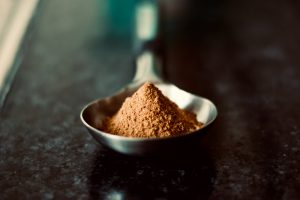What To Know About Weight Loss Patches
 Nobody is condemning you if you want a simple, quick way to lose weight. Isn’t that a dream of everyone that needs to shed a few pounds? The problem is, many manufacturers prey on that desire and come out with products that promise these miraculous results, but normally don’t deliver. The latest quick and easy weight loss products are weight loss patches. They are transdermal patches that contain ingredients that are supposed to help you lose weight. Just put the patch on the spots where you want fat to disappear and according to the advertisement, it just goes away. But do these products actually break down fat on your thighs, belly and butt?
Nobody is condemning you if you want a simple, quick way to lose weight. Isn’t that a dream of everyone that needs to shed a few pounds? The problem is, many manufacturers prey on that desire and come out with products that promise these miraculous results, but normally don’t deliver. The latest quick and easy weight loss products are weight loss patches. They are transdermal patches that contain ingredients that are supposed to help you lose weight. Just put the patch on the spots where you want fat to disappear and according to the advertisement, it just goes away. But do these products actually break down fat on your thighs, belly and butt?
The list of ingredients is impressive, but does it work?
There are two types of ingredients, stimulants and non-stimulants. Some ingredients have proven beneficial when taken orally, but there are no tests that show they are beneficial when used transdermally, through the skin. The stimulants patches may contain include those that contain caffeine, guarana, ephedra or green tea extract. The ones that contain no stimulants may include ingredients like Acai berry, flaxseed oil, bitter orange and yerba mate.
Do they work.
The biggest problem with most dietary supplements is lack of testing. There aren’t as rigorous standards for these diet aids as there are for prescription and OTC drugs. Most patches can claim they work because the ingredients used in the patches, when taken orally, may show some benefits. However, that doesn’t always translate to transdermal applications. The other proof of benefits are personal testimonies. While some are very glowing, manufacturers can also pay people to give recommendations, so you never really know if they’re true or not.
Are there dangers to weight loss patches.
Side effects and safety aren’t really known, since dietary supplements aren’t regulated by the FDA. Also, each type of patch contains different ingredients, so a sweeping statement about safety isn’t appropriate. Side effects will vary based on the ingredients. The purity of the ingredient and amount it contains will also determine the safety. If you’re taking prescription medications, some may interact poorly or interfere with it. People sensitive to stimulants or with high blood pressure should avoid patches containing stimulants.
- There is limited study, but some proof that may confirm the benefit of some ingredients in the patches. For instance, some patches that contain green tea extract showed benefits for weight loss in obese mice. How that translates to humans is yet to be determined.
- Some manufacturers suggest you combine the use of weight loss patches with a healthy diet and regular exercise for the best results. People who have done this have shown good results, but it can’t be determined whether the diet and exercise or patches made the difference.
- If you’re on any medication or have any condition, don’t use any patches without the express approval of your health care professional.
- The best way to take weight off and prevent it from returning is through a program of healthy eating and exercise. You’ll get many other health benefits from this type of program as well.
For more information, contact us today at Next Level Fitness



 Clients at Next Level Fitness in Irvine, CA, often ask about the benefits of having a good balance of omega 3 to omega 6 fatty acids. While the ration should be approximately four omega 6 to one omega three, the average American diet is anywhere between ten omega 6 to one omega 3 all the way to 50 omega 6 to one omega 3. It’s pretty obvious that something needs to be done to get back in balance. That means eating less food with omega 6 and boosting the omega 3 foods.
Clients at Next Level Fitness in Irvine, CA, often ask about the benefits of having a good balance of omega 3 to omega 6 fatty acids. While the ration should be approximately four omega 6 to one omega three, the average American diet is anywhere between ten omega 6 to one omega 3 all the way to 50 omega 6 to one omega 3. It’s pretty obvious that something needs to be done to get back in balance. That means eating less food with omega 6 and boosting the omega 3 foods.
 Not everyone should go gluten free. However, if you have a gluten intolerance or celiac disease, gluten free foods can help you return to good health. Unfortunately, gluten is often hidden in products you might not suspect, like ketchup or soy. Gluten is a protein in grains like wheat. While the higher amount of protein makes it a good option for some, it’s not for those whose body struggles with gluten. The problems that occur can include diarrhea, exhaustion, skin conditions, anemia, auto-immune disorders, depression, headaches, stomach pain and more. Today, almost 80% of wheat is a variety that’s high in gluten.
Not everyone should go gluten free. However, if you have a gluten intolerance or celiac disease, gluten free foods can help you return to good health. Unfortunately, gluten is often hidden in products you might not suspect, like ketchup or soy. Gluten is a protein in grains like wheat. While the higher amount of protein makes it a good option for some, it’s not for those whose body struggles with gluten. The problems that occur can include diarrhea, exhaustion, skin conditions, anemia, auto-immune disorders, depression, headaches, stomach pain and more. Today, almost 80% of wheat is a variety that’s high in gluten.
 While the best treatment for aching muscles is normally provided by a massage therapist, massage guns also can bring relief from sore muscles. These devices were first used by massage therapists to help increase circulation and bring aid for pain. They can provide deep relief at home that other types of vibrating machines and foam rollers can’t offer. It’s known as percussion therapy. Today, they’re found in many homes as a quick answer to painful muscles.
While the best treatment for aching muscles is normally provided by a massage therapist, massage guns also can bring relief from sore muscles. These devices were first used by massage therapists to help increase circulation and bring aid for pain. They can provide deep relief at home that other types of vibrating machines and foam rollers can’t offer. It’s known as percussion therapy. Today, they’re found in many homes as a quick answer to painful muscles.
 You have to have all four types of fitness training to become fit. They include balance, strength, endurance and flexibility. We provide all types of training at Next Level Fitness in Irvine, CA. Flexibility training is important to help prevent injury and can make moves you do daily easier on your body and more enjoyable. Increasing your flexibility takes more than just stretching occasionally. It takes constant effort and knowing the right way to increase flexibility.
You have to have all four types of fitness training to become fit. They include balance, strength, endurance and flexibility. We provide all types of training at Next Level Fitness in Irvine, CA. Flexibility training is important to help prevent injury and can make moves you do daily easier on your body and more enjoyable. Increasing your flexibility takes more than just stretching occasionally. It takes constant effort and knowing the right way to increase flexibility.
 Are you a chronic viewer of TikTok videos? If you are, you’re probably familiar with many of the different challenges. Some are really funny and a blast to try, while others can be quite dangerous. One of the more dangerous challenges is dry scooping. What is dry scooping? It’s taking a scoop of powdered pre-workout mix that is supposed to be added to water or other liquid and trying to swallow it. There are several reasons this seemingly benign activity can be dangerous.
Are you a chronic viewer of TikTok videos? If you are, you’re probably familiar with many of the different challenges. Some are really funny and a blast to try, while others can be quite dangerous. One of the more dangerous challenges is dry scooping. What is dry scooping? It’s taking a scoop of powdered pre-workout mix that is supposed to be added to water or other liquid and trying to swallow it. There are several reasons this seemingly benign activity can be dangerous.
 Is fitness a priority in your life? It should be. It affects how you feel, your health, your energy level, your mood and even how you look. While it takes some time to carve out time to get fit, the longer you put forth the effort, the faster you’ll get other tasks accomplished, due to increased energy. It isn’t just about losing weight, because if you’re thin, yet sickly, you aren’t functioning your best either.
Is fitness a priority in your life? It should be. It affects how you feel, your health, your energy level, your mood and even how you look. While it takes some time to carve out time to get fit, the longer you put forth the effort, the faster you’ll get other tasks accomplished, due to increased energy. It isn’t just about losing weight, because if you’re thin, yet sickly, you aren’t functioning your best either.
 If you have chronic exhaustion and feel tired and weak all the time, always check with your health care professional first. If the doctor says it’s not due to illness, then it’s time to take action. We can help you at Next Level Fitness in Irvine, CA. Sometimes the problem can come from being inactive. Sitting too long can actually wear you out. Take frequent breaks if you’re sitting for long hours and get moving. Stretch, walk or even do mild calisthenics. It all helps to get your blood circulating and boost your energy level.
If you have chronic exhaustion and feel tired and weak all the time, always check with your health care professional first. If the doctor says it’s not due to illness, then it’s time to take action. We can help you at Next Level Fitness in Irvine, CA. Sometimes the problem can come from being inactive. Sitting too long can actually wear you out. Take frequent breaks if you’re sitting for long hours and get moving. Stretch, walk or even do mild calisthenics. It all helps to get your blood circulating and boost your energy level.
 What’s the first thing you do when you’re feeling dragged out and ready to stop and drop? Some people grab a candy bar and others grab a cup of coffee. You can get energy without coffee or sugar and the energy lasts even longer. Unlike both, you won’t come crashing down, create a dependency or interrupt sleep later. Caffeine affects the neurotransmitters, blocking ones that make you feel drowsy and boosting those that make you feel alert. However, there are better ways to give your body a boost that are more long-lasting and can even help you get a good night’s rest.
What’s the first thing you do when you’re feeling dragged out and ready to stop and drop? Some people grab a candy bar and others grab a cup of coffee. You can get energy without coffee or sugar and the energy lasts even longer. Unlike both, you won’t come crashing down, create a dependency or interrupt sleep later. Caffeine affects the neurotransmitters, blocking ones that make you feel drowsy and boosting those that make you feel alert. However, there are better ways to give your body a boost that are more long-lasting and can even help you get a good night’s rest.
 One of the latest weight loss aids that are creating some interest are weight loss patches. Clients at Next Level Fitness in Irvine, CA have asked whether these work or are a waste of money. Exactly what are these patches? They work like nicotine patches or pain patches and deliver the ingredients trans-dermally, meaning via the skin, then go into the bloodstream.
One of the latest weight loss aids that are creating some interest are weight loss patches. Clients at Next Level Fitness in Irvine, CA have asked whether these work or are a waste of money. Exactly what are these patches? They work like nicotine patches or pain patches and deliver the ingredients trans-dermally, meaning via the skin, then go into the bloodstream.